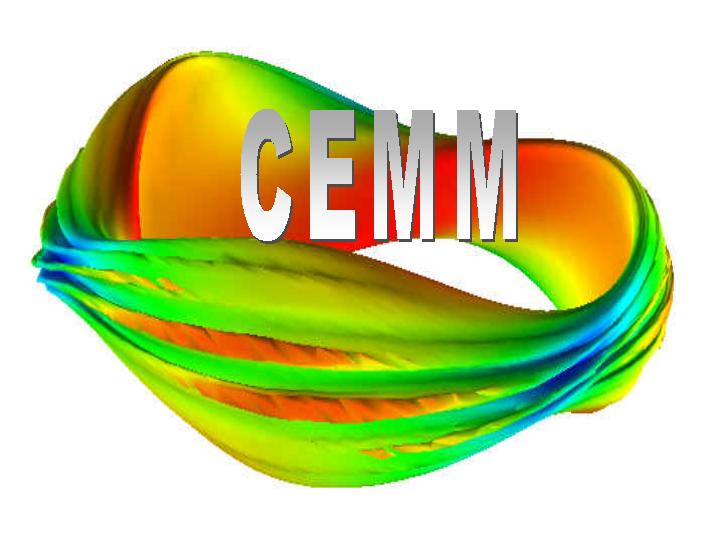Persons responsible: Sovinec/Breslau
1. Improve understanding of the present discrepancy between NIMROD and
M3D and move to new CDX-U-relevant cases with more realistic
parameters and sources.
Q1: M3D to study the effect of isotropic viscosity and thermal
conductivity on results.
Q2: M3D to understand q_0 evolution, and NIMROD to perform nonlinear
calculation with several values of q_0 to determine dependence.
Q3: Develop an analytically specified equilibrium. Apply NIMROD, M3D
and a third code (MARS) for linear growth rate comparisons.
Q4: Perform a new nonlinear comparison.
Persons responsible: Kruger/Snyder
2. Perform a linear edge stability calculation in a non-diverted equilibrium with a resistive code, and compare results with the linear ideal MHD code ELITE.
Q1. Decide upon appropriate equilibrium for the test cases.
Q2. Perform scans of resistivity values and profiles to study how the
resistive, linear MHD results converge to the ideal MHD results for each
toroidal mode number with an equilibrium that is robustly unstable
peeling-ballooning modes.
Q3. Repeat Q2 with equilibria that is closer to the threshold values.
Q4. Repeat Q2 and Q3 using a two-fluid model.
Persons responsible: Jardin/Glasser
3. Extend the 2D GEM nonlinear benchmark to non-zero guide field and more extreme parameters.
Q2: Perform exploratory studies of non-zero guide field case and better define parameters.
Q3: Perform comparitive study of non-zero guide field sequence
Q4: Document results and publish as warrented
Persons responsible: J.Chen/E. Held
4. Scalability studies on leading edge computers.
Q1: Perform initial scaling of M3D on Jaguar up to 10,000 processors and identify bottlenecks
Q2: Perform scaling studies of NIMROD on Jaguar, and identify bottlenecks
Q3: Repeat scaling studies for improved performance
Q4: Document results and present at conference as warrented.

